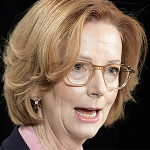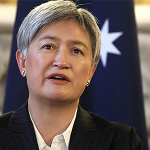The government’s MAD (misinformation and disinformation) bill has been killed – withdrawn from the Senate in what might have been the last sitting week before the next federal election. The bill, an abhorrent attack on free speech, will not be missed.
But that is not to say it might not be resurrected in some form in the future. If it were to re-emerge after the next election, it could very well grant new powers and funding to the eSafety Commissioner to mirror some of what the MAD bill was intended to do.
In anticipation of round two of this fight, it is worth reflecting on why this bill was introduced in the first place. Primarily, it was because the bill’s proponents claimed the spread of misinformation causes harm to the community. Of course, it is possible there are examples of that happening, yet the government provided scant evidence of that.
To illustrate, in an opinion piece by federal communications minister Michelle Rowland spruiking the MAD bill, the example of dangerous misinformation she cited was the claim circulating online ‘that drinking bleach may cure Covid’. She said, ‘This kind of content can put lives at risk.’
Instinctively it might feel wrong for such false medical advice to be shared online. But public policy should be determined not by feelings, but by quantifiable evidence. How many people were actually harmed by this example of misinformation that was deemed so important the minister used it to sell to the public the need for online censorship laws?
The answer is precisely zero people were harmed. According to a July 2023 report by the National Institute of Health in the United States, ‘We find no evidence that people ingested cleaning products to prevent a Covid infection.’
The MAD bill would have created a powerful bureaucracy to force social media platforms to silence certain content, opinions and viewpoints. It represented the largest attack on free speech in Australia’s peacetime history. If the public is to be asked to give up such freedoms, it is reasonable to expect that such a request is based on real, quantifiable harms to the community, not false rumours of people drinking bleach.
Another claim made by proponents of censorship is that social media companies are causing ‘polarisation’. In the submission by the Department of Home Affairs to the Senate committee hearing on the MAD bill, it was claimed the online spread of false and misleading information was a ‘challenge’ to democracy, as it ‘interacted’ with ‘societal polarisation or division, and experiences of prejudice and discrimination’.
If such a claim were correct, we might expect to see evidence of such polarisation in the outcome of the most recent American presidential election. Both parties had a major online presence and used social media and other digital platforms extensively. Further, unlike past elections, the bane of the global censorship agenda, Elon Musk’s X/Twitter, had removed previous restrictions to online speech on that influential platform. In an election campaign involving massive quantities of unrestrained social media content, we would therefore expect to see evidence of polarisation, with deeper divisions between race, gender, and sexual identity groups.
But the opposite occurred. This election saw a breakdown of certain groups predictably voting for certain candidates.
For example, despite Donald Trump’s rhetoric on illegal migration, 45 per cent of Hispanic voters voted for him. A majority of Hispanic men – 54 per cent – voted for Trump, a massive 33 percentage point increase compared to the 2020 election. Even though the Democrat candidate was a woman and ran on the issue of ‘reproductive rights’, Kamala Harris won the female vote by only 8 percentage points compared to Joe Biden in 2020 winning it by 15 percentage points. Even the once solidly Democrat demographic of African American voters, in an election featuring a Democrat candidate who was a ‘person of colour’, shifted towards Trump with a comparatively paltry 80 per cent choosing Harris. Trump’s share of African American votes has more than doubled, from 8 per cent in 2016 to 20 per cent in 2024.
And despite the media labelling Trump a fascist and white supremacist, his share of the vote of white men actually decreased in this election, albeit only marginally, from 61 per cent in 2020 to 60 per cent.
Far from becoming more polarised, demographic groups in the US are coalescing. A voter’s skin colour or gender no longer seems to determine their view on things like crime, immigration, or the economy.
Perhaps that is why the elites fear online free speech so much. With more people getting their information from online sources instead of mainstream TV, newspapers, or Hollywood, the elites have lost control of the narrative. It turns out that when exposed to robust debate, people make up their own minds. It is certainly true that the online world is messy, sometimes even hard-edged and nasty. But if robust online debate focuses attention on issues instead of identity, that seems eminently healthier than voting along sectarian lines.
It is this reality that leads me to conclude that another version of the MAD bill in some guise will re-emerge. For our current elites, it is not polarisation they fear but people thinking for themselves, an anathema they just will not stand for.
John Storey is the Director of Law and Policy at the Institute of Public Affairs.








